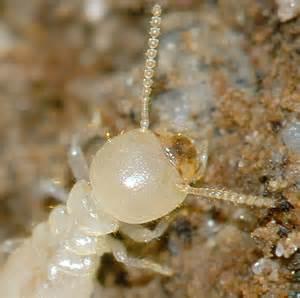Sat 24 May 2014
Getting to Know Subterranean Termites
Posted by sugarland
Subterranean termites are actually beneficial when in the soil, since they break down materials that contain cellulose, like dead trees. These insects live within the soil, needing moist soil or other sources of moisture to live. They only become problematic to homeowners when they begin to feed on parts of their house, through weakened areas.
How Do Termites Enter a House?
Termites maintain their moist environment and protect themselves by building earthen tubes that run from the moist ground into your structure. In many cases, they build the tubes on chimneys, porches, or inside walls, where they are not visible.
In a small number of situations, if wood and water can be obtained from a source that is not soil, a subterranean termite colony can be established without contact with the ground. This may occur in structures where the termites can get water from leaking roofs, pipes or condensation.
How Do Termites Live?
Termites are quite social, and they live in well-organized colonies. Their life stages include the egg, and an immature and then an adult stage, according to entomologists. Most adults are workers, and they can sometimes be found in wood that has been damaged. Workers are responsible for caring for the other termites in the colony, and for finding wood for food.
Soldier termites protect their colonies from ants and other attackers. They have also been found in damaged wood. Termites digest wood because they have microorganisms that live within their gut.
What Are Swarmers?
When colonies are large or old, they may produce adult termites known as swarmers. These have wings, and are the means by which termites start a new colony. These termites usually become active in the months of spring. Swarmers are more visible than other termites. They are sometimes confused with flying ants.
Preventing Termite Infestation
Inspection and prevention, used together, are the best ways to protect your house against attacks by termites. Subterranean termites are quite destructive to the structural wood in a house, especially if that wood is moist or decayed. Always be alert about weakened or moist wood in your home structure.
Termites will not usually infest a house without excess cellulose in the structure. This would include debris found in thick mulch, woodpiles and crawlspaces. When new construction is occurring, the wood stakes used in porches and foundations must be removed before the pouring of concrete, to avoid attracting termites.
Termite Control
If you have a termite colony infesting your home, insecticide treatments are used to control them. Fumigation may be needed if you have an extensive infestation. Most control for subterranean termites is done with the application of termiticides in the soil and by placing termite monitoring and bait stations around or inside the structure.

Liquid Termiticides
Treatment with liquid termiticides involves the application of the termiticide to soil adjacent to and under a building. This creates an effective barrier. The barrier will not eliminate ground-dwelling termites, but it will kill any that try to tunnel through to the structure. The barrier should be completely established, under and around the structure.
It is effective to trench around a structure and drill into the slab in order that the barrier will be continuous. The length of time the termiticide treatment continues to be effective depends on how thorough the application is, the intensity of the foraging and various conducive and environmental conditions.
Termite Baits
Termite baits don’t leave any residual chemicals in the soil. They can reduce or eliminate a colony, however. They may be used alone or with other forms of treatment. Baits can be useful in areas where other treatments were not successful. Baiting below ground uses the installation of bait stations every 10-20 feet around a structure. Stations are monitored regularly. Baiting above ground utilizes bait station installation over infested wood or mud tubes.
Now you know the subterranean termite. Take care not to do anything that would invite them into your home.
